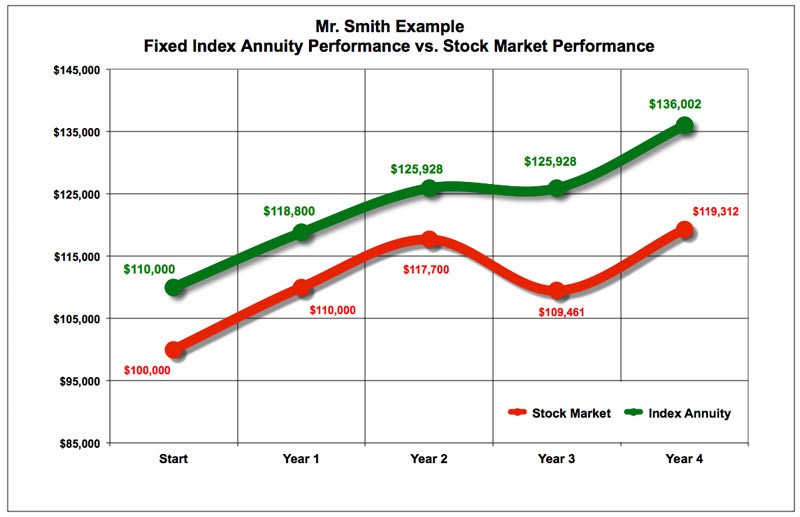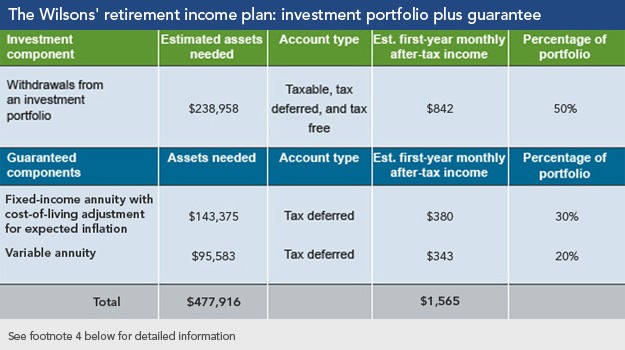Best Fixed Annuities Best Annuities Best Annuity Rates Best Fixed Annuity
Post on: 7 Май, 2015 No Comment

How to Find the Best Fixed Annuities
Best can mean several things. Most investors typically associate best with highest rate, but it’s also important to consider best in terms of how well an investment fulfils your financial objects. The keys to finding the best fixed annuities are: 1) siding with a reputable, financially sound insurer, 2) balancing the interest rate against contract flexibility, 3) shopping at a time when interest rates are high, or you suspect them to drop much lower, and 4) buying a long-term contract. All these factors work towards maximizing returns while reducing risk. Generally, though, there are trade-offs: the longer the commitment, the less flexibility, the higher the rate. To maximize growth, look for contracts with the highest rate and the least flexibility you can tolerate.
Other factors to consider when shopping for the best fixed annuity:
- Withdraw / Surrender charges
- The withdraw charge schedule
- Penalty-free withdrawal allowance
- Disability and terminal illness provisions
- The length of the guarantee period
Finding a Reputable Insurer
The only serious risk posed by fixed annuities is if the insurance company backing the contract goes belly-up. In reality, most insurance companies hold solid, diversified portfolios that allow them to weather most economic storms. Occasionally though, an insurance companies can become insolvent. Even in these cases policy holders are still covered by Minimum State Guarantees. but it’s best to avoid this scenario altogether. How? Go with only the A-rated, brand name insurance providers; there’s just no reason not too. Sometimes a failing company may offer more attractive rates, but that’s not usually the case, and the marginally better rates wouldn’t justify the risk. First and foremost go with a company you can trust and rely on.
For a list of every major insurance provider’s financial rating, see Annuity Company Ratings. After the 2008 economic collapse, Metlife, ING, New York Life, and John Hancock are still solid bets. Avoid AIG and Genworth Financial, whose ratings were substantially downgraded in 2008.
Balancing Flexibility
A high-yield annuity is not necessarily the best annuity. Every investment has its trade-offs, and this is true of annuities. Be careful with what might seem like a free lunch. A high rate typically entails a stricter withdrawal schedule, a longer term, a larger premium, or a shortened guarantee period. For most shoppers the best annuities will have a healthy balance between all of the above.
Shopping at the Right Time

Fixed annuity rates go up and down over the course of the year, mimicking the behaviour of general interest rates. As with CDs, you’re locking in a fixed rate for X number of years, during which time the general rate of return on other fixed-income vehicles may rise or fall. It’s therefore to your benefit to shop when rates are high and are suspected to drop. That said, annuities are not to be regarded as stock-trades. You’re saving for retirement, not looking to make a quick, speculative profit. With this in mind, it’s more important to buy the annuity when it fits your retirement plan than to wait around and second-guess a perfect point in the cycle. Your strategy is to invest early and rely on compound interest and historical market averages to prevail, not forecast the market.
Don’t Just Shop, Implement a Solid Retirement Strategy
Purchasing an annuity is a big decision. Online research is a good start, but prudent investors should discuss all their options and risks with an independent financial advisor. Request a free, no-obligation consultation today, along with a report of current rates on brand-name annuities.
(limited time offer)
Buying Long-term
Higher rates correlate with longer term commitments and larger premium deposits. Insurance companies are eager to hold your money as long as possible so they can increase their return on investment. This being the case, they typically offer incentives for committing to longer contract terms. This can actually be to your benefit because retirement accounts are naturally long-term. As long as you’re comfortable and well-diversified, go for the longer term and get the better rate. Just double-check your annual penalty-free withdrawal limit to make sure it satisfies any potential need to take out funds for emergencies.
If you want the highest possible rate, consider laying down a large premium. Insurers often offer better rates for large lump-sum investments. $5,000 might be the contract minimum, but it won’t lock in the best rate. You’re also better off purchasing a single $100,000 policy than four $25,000 policies. Consolidate small purchases to reduce paperwork, overhead, and fees.
The Withdrawal Charge Trade-off
A typical fixed annuity withdrawal charge ranges from 2-8%. That’s the first year’s withdrawal, which many policies phase out within 3-6 years. Excessively drawn-out withdrawal charges can be problematic, but most are reasonably short. Statistically, over 75% of fixed annuity investors never withdrawal prematurely given their focus on long-term growth. Aim for this percentile. For some investors, higher withdrawal fees or a less flexible fee schedule might actually be preferable if they can negotiate a higher rate, but this is not always the case. Be sure to calculate this trade-off carefully.
If the unexpected does occur, and you need to withdrawal money early, the annual penalty-free withdrawal limit provides wiggle-room. In the range of 10%, this limit indicates how much money can be withdrawal on a yearly basis without incurring charges. In the case of a fixed annuity valued at $100,000 with a 10% withdrawal limit, the owner is allowed to take out $10,000 every year. Any withdrawals above that amount would incur a charge. Depending on your risk-tolerance, you can choose to sacrifice part of the withdrawal rate for higher interest and vice versa.
Looking for Longer Guaranteed Periods
It might seem that a 7.5% fixed rate annuity for 10 years means just that, but actually, most fixed annuities only guarantee rates for part of the whole term. In this case, 7.5% might be guaranteed for only 3 years, potentially dropping at the start of year 4. When shopping around, be sure to maximize your guaranteed period. The trade-off is similar to a fixed vs. variable rate mortgage. A lower rate guaranteed for 10 years is preferable to a high teaser rate that expires one year down the line.
The good news is, the guaranteed period is golden you’ll be earning that 7.5% regardless of market conditions. If the economy turns for the worse or interest rates dip, the insurance company could start losing money but you’ll still earn a profit. That’s why fixed annuities are great buys prior to economic downturns if interest rates start to decline, lock them in! One features that keeps fixed annuities form turning into variable rate mortgages is the bailout provision. It ensure that should future rates fall by more than 1% below the guaranteed rate, the owner is free to liquidate without penalty and shop for a new product.
For the best fixed annuity rates, pressure your agent to compare numerous products. To contact a licensed specialist with access to annuity products from brand name carriers, Click Here.














